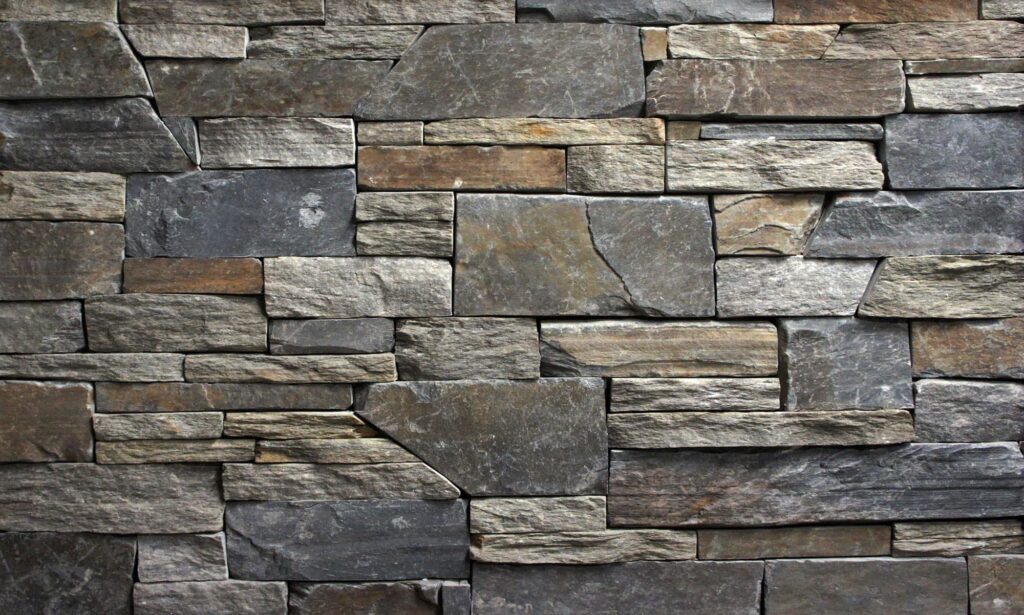Masonry is the construction of buildings and other structures using concrete blocks, brick, stone, and mortar. Throughout the centuries, people have utilised this technique to construct everything from modest homes to massive monuments like castles and churches. Correct placement of the masonry components is essential to preserve the structural integrity and longevity. To secure the bricks and stones, the mortar must be carefully prepared and applied.
Fire resistance, Durability, and energy economy are just a few of the many advantages of masonry construction. A well-maintained stone building can last hundreds of years, making it an enduring and aesthetically pleasing part of any garden. Masonry is favoured for many building projects due to its durability and visual appeal.
The Essential Masonry Equipment for Your Next Stone, Brick, or Concrete Structure
DIY masonry is possible if you take your time, consult professionals, and equip yourself with the necessary tools. You’ll need these essential masonry tools when working with stone, brick, or concrete.
Brick Hammer
You can’t compare a brick hammer to a regular hammer. It’s a hammer with a square head and a blunt face, and it’s made to smash brick, stone, and concrete. The opposite side is narrow and chisel-like to facilitate more precise fractures in brick, stone, or concrete.
Margin Trowel
This trowel has a flat end, making it ideal for working with mortar in confined areas. This trowel is as close as you’ll get to finding a single tool that can handle every conceivable brickwork task.
Cold Chisel
The term “cold chisel” may be a misnomer. It’s not meant to be worn in the winter but rather used to slice through frigid metal. Because of this, it is ideal for stone cutting. You can use a big ball-peen hammer to easily pound on the chisel because the hardened steel has a protective handle.
Mason’s Level
These are the industry standard, four-foot-long levels made for precise measurements in masonry.
Wire Brush
Rock and concrete chips that find their way onto your workspace can be easily removed with a wire brush. When repairing concrete, a brush with such a hard bristle is necessary for ripping away old material.
Pointing Trowel
More precise masonry tasks, such as “tucking” mortar into seams between bricks and stones, require a pointing trowel.
Masonry Tape Measure
These are regular tape measures with scales for brick spacing along their undersides.
Wheelbarrow
The success of any masonry job depends on having a sturdy wheelbarrow. It has various applications in the construction industry, including moving bricks and pavers, pouring concrete, mixing mortar, and clearing debris.
Masonry Saw
Construction projects involving stone, concrete, or brick can get by without masonry saws, but having one on hand is always a good idea. Concrete, cut-off, road, and quick-cut saw are just a few of the many titles given to this type of saw. Saws can be anything from tiny hand tools to massive walk-behind machines that slash through asphalt and concrete. Diamond saw blades are used to saw through various materials, including concrete, brick, stone, and more. Due to the high levels of friction and heat produced while cutting, the blades of most of these saws need to be cooled with water.

Types Of Masonry Work
Masonry can refer to a wide variety of construction techniques. Among these are:
Brick Masonry Work
Bricks are used in this style of masonry work and are manufactured from a mixture of sand, clay, and water. Bricks are put in a specific pattern, and mortar made from cement, sand, and water connect them. Brick masonry is used in many contexts, including chimneys, building structures, retaining walls, fireplaces, and garden walls.
Stone Masonry Work
This type of masonry uses stones like sandstone, granite, and limestone. The stones have been precisely cut and sculpted for a snug fit. Stone masonry can be seen in the construction of ancient landmarks like the Great Wall of China, Stonehenge, and the Pyramids of Giza.
Concrete Masonry Work
Precast concrete blocks, a product of water, sand, cement, and aggregates, are used for masonry work. The blocks are arranged in a design, and then mortar is used to connect them. Concrete masonry includes building structures such as retaining walls, fireplaces, chimneys, and garden walls.
Glass Block Masonry Work
Glass blocks are used in this masonry style to create walls, dividers, and even skylights. Glass insulating or laminated blocks are assembled with silicone or cement. Glass block masonry is commonly used for commercial building walls, bathrooms, and skylights.
Benefits of Working with Masonry
- Its longevity makes it an excellent choice for buildings subjected to extreme climate conditions and other environmental hazards.
- It is a great choice for fireproofing because it does not burn and forms a protective barrier against flames.
- It can assist in keeping a building at a constant temperature, cutting down on the energy used by the heating and cooling systems.
- Masonry is low-maintenance since it rarely needs repairs, and those that do are easily accomplished.
- Aesthetics: Masonry comes in various textures, colours, and patterns, complementing any design scheme.
- Green because it can be made with abundant, renewable materials and produces fewer glasshouse gases during manufacturing.
Challenges In Masonry Work
There are several obstacles to overcome while working with stone.
- Materials Finding high-quality bricks and mortar can be challenging and costly.
- Labour: It is tough to find and even more difficult to keep skilled masons on staff.
- Inclement weather, such as rain or extremely high temperatures, can halt or postpone masonry projects.
- Risks associated with masonry construction include falling from great heights, being cut by pointed objects, and breathing in toxic dust.
- Depending on the complexity of the design and the amount of restoration work required, masonry projects might take a very long time to finish.
- Masonry projects can be costly if high-end materials are used, or skilled workers are needed.
- Verifying that masonry work is physically sound and by local building codes might be difficult.
Advice for Working Safely with Masonry
When working with stone, it is crucial to remember the following safety measures.
- Wear a hard hat, goggles, and gloves to keep yourself safe.
- Keep equipment in good working order and safe by inspecting it regularly.
- To avoid harming yourself, you should always use safe lifting procedures.
- Make sure there are no clutter or obstacles in your working space.
- When utilising scaffolding or ladders, follow manufacturer safety guidelines.
- Protect your lungs and respiratory system by donning a mask.
- Safely stowing away bulky items is essential.
- Use the right equipment and methods to prevent masonry components from chipping or shattering.
- Stay away from any live wires or other electrical components.
- Never do something by yourself. Always work with a helper nearby.

The Most Common Issues That Affect Masonry
Efflorescence
Efflorescence occurs frequently on brick walls due to a whitish crystalline layer formed by lime or masonry cement materials. Efflorescence is sometimes mistaken for mould, although, unlike mould, it does not grow on organic materials. You’re more likely to have an efflorescence issue in the fall and spring when temperatures are generally lower, and precipitation is more common.
The best approach to solving this challenge will vary depending on the nature of the problem at hand. Therefore, a masonry professional should be called for a proper diagnosis and action plan. However, if you’re curious, you can learn more by conducting extensive study. You can learn from this what actions to refrain from taking so as not to exacerbate the issue further.
Wall That Appears To Be Bloating
Although this phenomenon has a unique name, its effects are anything from endearing. A swollen brick wall can result from water seepage, rusting anchors, deteriorating mortar, or movement of the outside cladding. Check for an area of your brick wall that has developed an unnatural swelling.
Contacting a mason as soon as you suspect the occurrence of such swelling is essential. This is because the wall could cave in at any moment. The mason can tell you if the entire brick wall needs to be rebuilt or the damaged piece can be patched up.
Deterioration of the Mortar
The mortar used to unite bricks can be subpar or deteriorate with time. Water infiltration and the formation of bulging are two more issues that might result from ignoring degradation indications.
Broken Bricks
Variations in temperature and other conditions can shorten the life of bricks, which can then become damaged over time. It is safe to remove and repair the damaged bricks once it has been determined that the affected area does not conceal a bulging wall.
Cracks In The Brick Walls
Although bulging walls often cause cracks in brick walls, this is only sometimes the case. It could be indicative of any number of issues. Perhaps the house sagged, or the foundation was compromised, which could have contributed to the break.
This may indicate a major issue. Therefore, it’s important to investigate and take corrective measures without delay.
Mould
To begin, we defined efflorescence and showed how it differs from mould. However, it might have serious implications if the latter is not addressed promptly. Cleaning the area thoroughly may be all needed if the mould has yet to spread too far. However, if the mould has penetrated far into the wall, along with any gaps or fissures, more extensive repair will be required. Finding the source of the mould is also crucial for stopping it from reappearing.
Conclusion
Masonry is the construction of buildings and structures using concrete blocks, brick, stone, and mortar. It has been used for centuries to construct various structures, from modest homes to massive monuments like castles and churches. Proper placement of masonry components is essential for preserving structural integrity and longevity. Masonry construction offers fire resistance, durability, and energy economy. A well-maintained stone building can last hundreds of years, making it an enduring and aesthetically pleasing part of any garden.
To create a successful masonry project, it is essential to consult professionals and equip yourself with essential tools. These tools include a brick hammer, a margin trowel, a cold chisel, Mason’s level, a wire brush, a pointing trowel, a Masonry tape measure, a wheelbarrow, and a masonry saw. Masonry can refer to various construction techniques, such as brick masonry, stone masonry, concrete masonry, and glass block masonry.
Brick masonry involves placing bricks in a specific pattern, while stone masonry uses stones like sandstone, granite, and limestone. Concrete masonry uses precast concrete blocks, while glass block masonry uses glass blocks to create walls, dividers, and skylights. Having a masonry saw on hand is essential for slicing through various materials and ensuring the longevity and durability of the masonry structure.
Masonry is a durable and environmentally friendly material that can be used in various construction projects due to its longevity, fireproofing properties, and aesthetic appeal. It is low-maintenance and requires minimal repairs. However, there are challenges in masonry work, such as finding high-quality bricks and mortar, finding skilled labor, and dealing with inclement weather. Risks include falling from heights, being cut by pointed objects, and breathing in toxic dust.
Working safely with masonry requires following safety measures such as wearing hard hats, goggles, gloves, maintaining equipment, using safe lifting procedures, avoiding clutter, following manufacturer safety guidelines when using scaffolding or ladders, wearing masks, safely stowing away bulky items, using the right equipment to prevent masonry components from chipping or shattering, staying away from live wires, and working with a helper nearby.
Some common issues affecting masonry include efflorescence, bloating walls, deteriorating mortar, broken bricks, cracks in brick walls, and mould. Efflorescence is often mistaken for mould but does not grow on organic materials. A masonry professional should be called for a proper diagnosis and action plan.
Bloating walls can result from water seepage, rusting anchors, deteriorating mortar, or movement of the outside cladding. Deterioration of mortar can result from temperature and other conditions, and damaged bricks should be repaired. Identifying the source of mould is crucial for preventing its reappearance.
Content Summary:
- Masonry is the construction of buildings and other structures using concrete blocks, brick, stone, and mortar.
- Correct placement of the masonry components is essential to preserve the structural integrity and longevity.
- To secure the bricks and stones, the mortar must be carefully prepared and applied.
- DIY masonry is possible if you take your time, consult professionals, and equip yourself with the necessary tools.
- You’ll need these essential masonry tools when working with stone, brick, or concrete.
- Because of this, it is ideal for stone cutting.
- These are the industry standard, four-foot-long levels made for precise measurements in masonry.
- Rock and concrete chips that find their way onto your workspace can be easily removed with a wire brush.
- It has various applications in the construction industry, including moving bricks and pavers, pouring concrete, mixing mortar, and clearing debris.
- Construction projects involving stone, concrete, or brick can get by without masonry saws, but having one on hand is always a good idea.
- Concrete, cut-off, road, and quick-cut saw are just a few of the many titles given to this type of saw.
- Diamond saw blades are used to saw through various materials, including concrete, brick, stone, and more.
- Masonry can refer to a wide variety of construction techniques.
- Glass block masonry is commonly used for commercial building walls, bathrooms, and skylights.
- Masonry is low-maintenance since it rarely needs repairs, and those that do are easily accomplished.
- There are several obstacles to overcome while working with stone.
- Finding high-quality bricks and mortar can be challenging and costly.
- Masonry projects can be costly if high-end materials are used, or skilled workers are needed.
- Verifying that masonry work is physically sound and by local building codes might be difficult.
- When working with stone, it is crucial to remember the following safety measures.
- Wear a hard hat, goggles, and gloves to keep yourself safe.
- Keep equipment in good working order and safe by inspecting it regularly.
- To avoid harming yourself, you should always use safe lifting procedures.
- Make sure there are no clutter or obstacles in your working space.
- When utilising scaffolding or ladders, follow manufacturer safety guidelines.
- Protect your lungs and respiratory system by donning a mask.
- Use the right equipment and methods to prevent masonry components from chipping or shattering.
- Efflorescence is sometimes mistaken for mould, although, unlike mould, it does not grow on organic materials.
- You can learn from this what actions to refrain from taking so as not to exacerbate the issue further.
- Although this phenomenon has a unique name, its effects are anything from endearing.
- A swollen brick wall can result from water seepage, rusting anchors, deteriorating mortar, or movement of the outside cladding.
- Check for an area of your brick wall that has developed an unnatural swelling.
- Contacting a mason as soon as you suspect the occurrence of such swelling is essential.
- The mason can tell you if the entire brick wall needs to be rebuilt or the damaged piece can be patched up.
- The mortar used to unite bricks can be subpar or deteriorate with time.
- Variations in temperature and other conditions can shorten the life of bricks, which can then become damaged over time.
- It is safe to remove and repair the damaged bricks once it has been determined that the affected area does not conceal a bulging wall.
- Although bulging walls often cause cracks in brick walls, this is only sometimes the case.
- Therefore, it’s important to investigate and take corrective measures without delay.
- Mould To begin, we defined efflorescence and showed how it differs from mould.
- Cleaning the area thoroughly may be all needed if the mould has yet to spread too far.
- However, if the mould has penetrated far into the wall, along with any gaps or fissures, more extensive repair will be required.
- Finding the source of the mould is also crucial for stopping it from reappearing.
FAQs About Masonry
What Is The Importance Of Proper Mortar Mixing In Masonry Work?
Proper mortar mixing ensures that the mortar has the right consistency and strength for holding bricks or stones together. Inadequate mixing can lead to weak joints and compromised structural integrity.
How Can Masonry Workers Prevent Musculoskeletal Injuries?
Workers should use ergonomic tools to prevent injuries, maintain proper posture, and take regular breaks. Stretching before and after work can also help alleviate strain on muscles and joints.
What Are The Risks Associated With Working At Heights In Masonry Construction?
Working at heights poses falling risks. Use secure scaffolding or elevated work platforms, wear fall protection equipment like harnesses, and ensure proper training in working at elevated positions.
How Do Seismic Considerations Impact Masonry Construction?
In seismic-prone areas, masonry structures must be designed and constructed to withstand the lateral forces generated by earthquakes. Proper reinforcement and bonding are essential for seismic resistance.
Can Masonry Work Be Combined With Other Construction Methods?
Yes, masonry work can be combined with other methods like steel framing or concrete structures. This hybrid approach can offer both masonry’s aesthetic benefits and other materials’ structural advantages.
